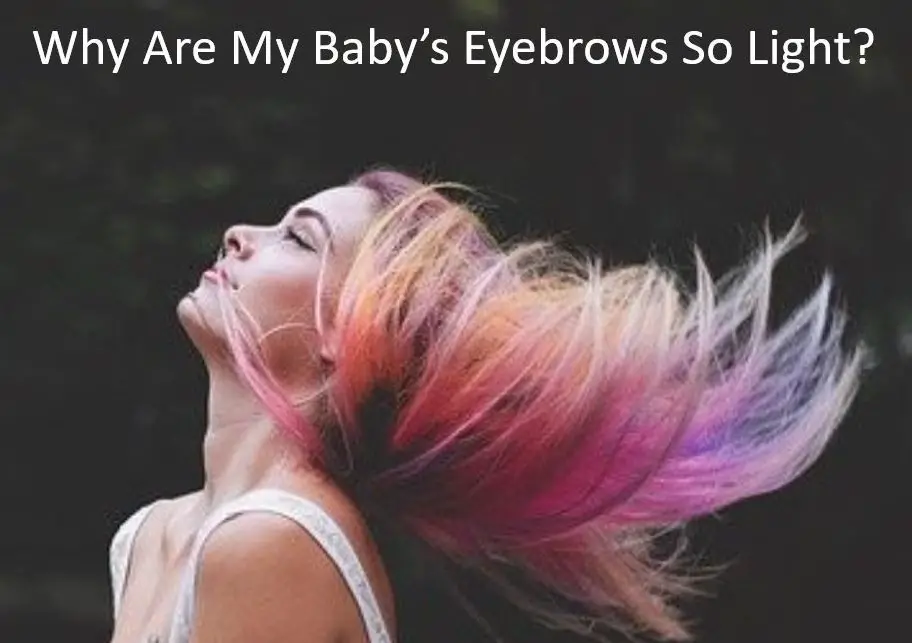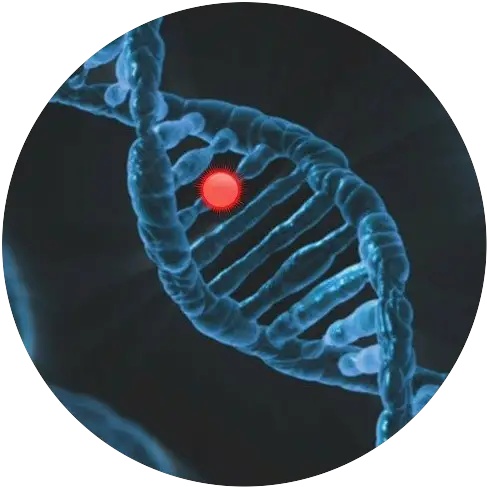Why Are My Baby’s Eyebrows So Light? (3 Factors That Determine Your Baby’s Eyebrows and Hair Colour)

At birth, many babies have non-existent or super-light and fine hair. Others are born with a full head of hair.
The same goes for eyebrows. After all, every baby is unique and grows hair at its own pace.
What’s more, there are big chances that the colour and texture of their eyebrows and hair will change with time.
Nevertheless, this is a complex subject involving many factors, such as parents’ genes, pigmentation and ethnicity.
Let’s get to the bottom of why my baby’s hair and eyebrows are so pale and what determines their colour.
Why Are My Baby’s Eyebrows So Light?
Babies begin developing their eyebrows towards the end of the second trimester of pregnancy. However, no pigment is produced while in the womb – hence the majority of babies are born with fine, silky and light eyebrows. Over time the brows will become thicker, darker and more prominent. Furthermore, the ultimate colour of your baby’s eyebrow is already predetermined by genes, ethnic background and type & quantity of produced melanin. But, it may take a few years, during which the shade and texture may change several times until your baby develops her final look.
Related Post ================> Is It Normal For A Baby To Lose Hair?
1. When Does A Baby Grow Eyebrows?
Typically, babies’ hair follicles (hair roots) develop while they are still in the womb. The process starts around 22 weeks of pregnancy.
This means that babies born after 22 weeks will have eyebrows. Even if they are ultra-light, silky and hardly visible.
And that’s because their initial hair contains no pigment. But I will come back to this later.
As the baby grows, so is her hair and eyebrows. Around month 3, your baby’s eyebrows will start getting thicker, darker and become more defined. Once your little one turns 5, her hair and brows should reach their predetermined colour.
Furthermore, the colour and texture of her hair and eyebrows may alter a few times during her lifetime. Curly hair can become straight, blond can become brown (and grey eventually) etc. That’s because the shape of follicles can be changed from round to flat, which can modify the hair texture.
There are a few factors that may instigate this change:
- Hormonal shifts during puberty, pregnancy or menopause. Basically, hormones can change the way genes work, which will impact hair colour.
- Medication (such as chemotherapy) and chemicals, such as the ones used for perms. These chemicals can permanently damage the follicles and alter hair texture.
- Exposure to ultraviolet radiation (UV radiation) can damage hair and destroy pigmentation, which results in a lighter shade of hair.
- And later on in life – ageing decreases the amount of pigmentation, and hence the hair turns grey.
My older daughter was born with a head full of dark curls. By the time she turned 2, she was blonde with slightly wavy hair. This came as a big surprise, as my hubby and I are dark-haired.
So, how is it possible that two dark-haired people produced a blond-haired baby? Let’s read on.
2. A Little Bit About Genetics
I think I won’t surprise you with the fact that genes play a huge role in determining your baby’s looks. This includes amongst other factors, the colour of eyes, skin, hair, and eyebrows.
There is a lot of ongoing research focusing on genetics. Nevertheless, there is still a lot to be discovered about the complex relationship between genes and hair colour.
There are at least a dozen genes that influence hair colour. But the most known one is MC1R.
MC1R controls how much and what type of pigment (eumelanin or pheomelanin) is produced in the root of the hair. The quantity and ratio of these two pigments determine the hair and eyebrow colours.

Dominant And Recessive Alleles
It is estimated that every human carries between 20,000 and 25,000 genes. And each person has two copies of each gene inherited from both parents.
Humans have the majority of their genes identical, but there are a few genes that differ from person to person. These are called alleles.
Alleles are variations of the same gene, but the sequence of DNA is slightly different. They play a crucial role in determining each new person’s unique characteristics. Among other things, they control the production of eumelanin – a pigment that gives dark colour to hair.
Now, genes can be either dominant or recessive.
The dark hair gene is always dominant, and the blond hair gene is always recessive. In practice, it means the following:-
- A dark-haired baby may have either two dark hair genes (alleles) or one dark allele and one blonde allele.
- A blonde baby will always have two blonde alleles. That’s because she carries only one gene – the recessive blonde allele.
- If two dark-haired parents carry the recessive blonde gene, there is a 25% chance that their baby turns blonde.
3. Hair Pigmentation
Pigmentation of the hair depends on the two types of pigment (melanin) produced by melanin-forming cells, called melanocytes.
The melanocytes (gene MC1R) produce eumelanin when their receptors are active.
If the receptors are blocked or inactive – they produce pheomelanin.
According to estimates, 80% of a person’s genes are active.
Main hair colour.
|
Main Hair Colour |
Type and quantity of pigment |
MC1R gene activity |
|
Black |
High levels and density of eumelanin |
Both copies of MC1R genes inherited from both parents are active |
|
Brown |
Moderate levels of eumelanin | |
|
Blond |
Low levels and density of eumelanin |
One copy of the MC1R gene is inactive |
|
Red |
Low levels of eumelanin, high levels of pheomelanin |
Both copies of the MC1R genes are inactive |
|
White |
No pigment present |
Besides the above, variations in the ratios of these pigments lead to many shades within a single colour
4. Ethnic Background & Geographical Location
Hair colour is strongly related to your little one’s ancestry.
For example, straight black hair is typical in East Asia. Curly dark hair is associated with Africans. Blonde hair is prevalent in Northern and Eastern Europe, whereas red hair is typically British and Irish features.
Generally speaking, darker hair is associated with regions of intense sunlight, and lighter hair is prevalent in areas with less sunlight.
Also, people living in the southern hemisphere typically have darker hair, whilst those living in the northern hemisphere have lighter hair.
It is estimated that over 90% of the world’s population have black and brown, and only 1-2% of people have red hair.
Of course, there are exceptions due to migration and genetics.
5. Will The Colour of My Baby’s Eyebrows Match Her Hair Colour?
The short answer is no – not necessarily.
In fact, hair, eyebrows, and other body hair are hardly ever the same!
Brows might be a tone or two lighter or darker than the head hair. And that’s totally normal.
Both hair and eyebrows will change during the first few years of your baby’s life. Again – genes are here to blame for these mismatching colours.
6. Final Few Lines
3 factors influence the baby’s hair and brow colour; genetics being the most influential, ethnicity and pigmentation.
Genes generally control the production of melanin which determines hair colour. This process can be altered by hormones, chemicals, and sunlight.
The bottom line is – don’t get alarmed if your little one was born with ultra-light or non-existent brows. It is within the broad spectrum of normal.
All you need to do is sit tight and wait – the brows will eventually grow.
Naturally, you should consult your healthcare provider if you have concerns about your baby’s hair or eyebrows.
